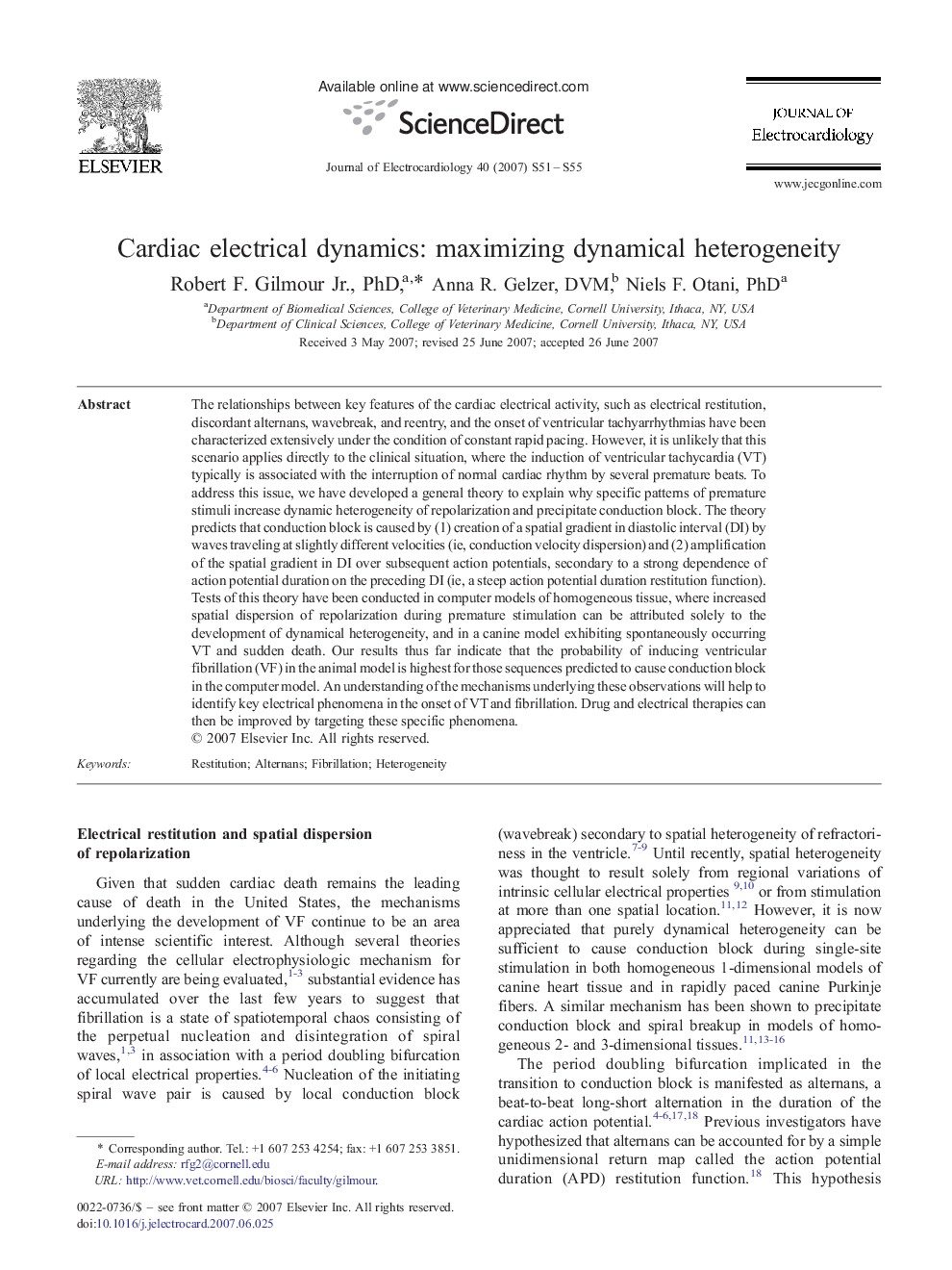| Article ID | Journal | Published Year | Pages | File Type |
|---|---|---|---|---|
| 2968156 | Journal of Electrocardiology | 2007 | 5 Pages |
The relationships between key features of the cardiac electrical activity, such as electrical restitution, discordant alternans, wavebreak, and reentry, and the onset of ventricular tachyarrhythmias have been characterized extensively under the condition of constant rapid pacing. However, it is unlikely that this scenario applies directly to the clinical situation, where the induction of ventricular tachycardia (VT) typically is associated with the interruption of normal cardiac rhythm by several premature beats. To address this issue, we have developed a general theory to explain why specific patterns of premature stimuli increase dynamic heterogeneity of repolarization and precipitate conduction block. The theory predicts that conduction block is caused by (1) creation of a spatial gradient in diastolic interval (DI) by waves traveling at slightly different velocities (ie, conduction velocity dispersion) and (2) amplification of the spatial gradient in DI over subsequent action potentials, secondary to a strong dependence of action potential duration on the preceding DI (ie, a steep action potential duration restitution function). Tests of this theory have been conducted in computer models of homogeneous tissue, where increased spatial dispersion of repolarization during premature stimulation can be attributed solely to the development of dynamical heterogeneity, and in a canine model exhibiting spontaneously occurring VT and sudden death. Our results thus far indicate that the probability of inducing ventricular fibrillation (VF) in the animal model is highest for those sequences predicted to cause conduction block in the computer model. An understanding of the mechanisms underlying these observations will help to identify key electrical phenomena in the onset of VT and fibrillation. Drug and electrical therapies can then be improved by targeting these specific phenomena.
